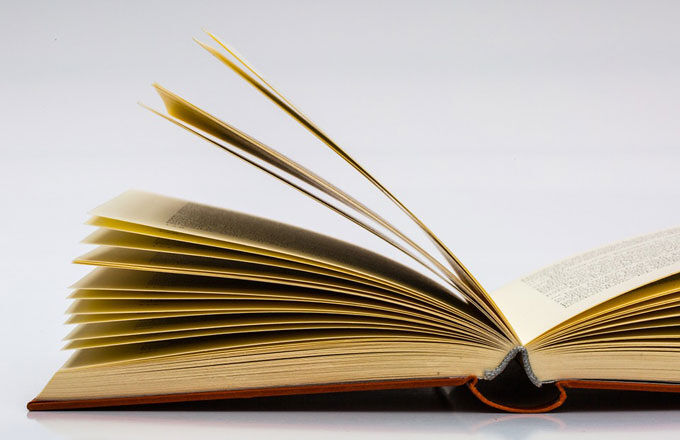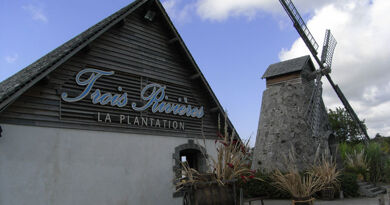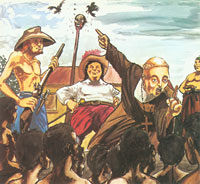Creole literature of the “New Negroes”
During the whole period of slavery and even beyond, only Creole whites were able to write. And the least we can say is that their works are very mediocre (aesthetic and above all, the two perhaps going hand in hand, human). With rare exceptions, like that of the elegiac poet of the end of the eighteenth century, Nicolas-Germain Léonard, sensitive to the misfortunes of slaves and the harshness of his compatriots, and later, after the Abolition, that of the Guadeloupe poet Octave Giraud (Fleurs des Antilles, 1862), they are all activists and openly or hypocritically plead in favor of the maintenance of slavery.
Whether it is the novels of Prévost de Traversay (Les Amours de Zémédare et Carina, 1806), by J.H.J. Cushion (Eugène de Cerceil ou les Caraïbes? Bes, 1824), by Louis de Maynard de Queilhe (Outre-Mer, 1835), by J. Levilloux (Les Créoles ou la vie aux Antilles, 1835), poems by Poirié Saint- Aurèle (Les Veillées Français, 1826; Cypress and palm trees, 1833; Les Veillées du Tropique, 1850) or J. Lemerle (Loisirs d’un Blais, 1865), all these writings say the aberration of the Creole world, that the absence of any black author implicitly suffices to condemn.
The doudouiste transition
Gradually, after the Abolition, while some Whites (notably Rosemond de Beauvallon) Yesterday, Today, Tomorrow or the Creole Agonies, 1885 and, temporarily, Saint-John Perse (? Eloges, 1910, Anabase, 1924?) express their nostalgia for a vanished world, while others, like René Bonneville (Le Triomphe d’Eglantine, 1899) take their side of the social upheaval intervened, begin to appear on the literary scene of the colored writers: Eugène Agricole, Oruno Lara, Salavina, etc. Their works are generally not of a remarkable quality and the explanation can be found in the recent accession to the culture (and to a culture somehow “foreign”) of the classes concerned. In addition, being written by well-to-do people (the only ones currently benefiting from relatively advanced education, the only ones able to have access to libraries and leisure facilities), they carry a conservative ideology, anti-racism of course, but socially not very progressive. Thus will meet aristocratic Creole whites and upstart colored men, all gentrified, in the defense and illustration of a literature both “regionalist” and conformist: Daniel Thaly, Marcel Achard, Joseph Marraud de Sigalony, Victor Duquesnay, Léon Belmont, Irmine Romanette, Emmanuel-Flavia Léopold, André Thomarel, Daniel de Grandmaison, Auguste Joyau, Gilbert de Chambertrand will sing “French” West Indies first, more or less Edenic in addition, where racial problems will be minimized yet very important in the interwar period.
Creole literature of the “New Negroes”
The inspiration “doudouiste” will dominate the Creole literature until the moment when will arrive on the front of the scene of the people who will have in the public school, with the system of grants established by the Republic, to be able to speak on behalf of another class: that of the common people, agricultural workers, descendants of slaves, those who never had a voice in French, who never had a pen before … And it will be the appearance of “black” writers (blacks of skin very often, but especially “black” ideologically, anxious to speak on behalf of the proletariat who, as everyone knows, is above all negro, anxious to deal with vital problems , fundamental of the country, and no longer to paint picturesque and reassuring postcards): the signatories of Self-defense in 1932, Césaire and the Book of a Return to the native land in 1939, Joseph Zobel and his various novels, including Diab ‘ there in 1945, La Rue Cases-Nègres in 1950. Since then, it must be said, the few books signed by Creole whites or unrepentant doudouist people of color hardly weigh in front of the work of Aimé Césaire (Miraculous Weapons, Cadastre, Lost Body, Fittings, The Tragedy of King Christophe, Une Saison au Congo, Une Tempête, Toussaint Louverture, etc.), in front of those of Paul Niger (Initiation, The Mighty, The Frogs of Mount Kimbo), of Guy Tirolien (Golden bullets, Live leaves in the morning) , by Michèle Lacrosil (Sapotille and the clay canary, Cajou, Demain Jab-Herma), Edouard Glissant (La Lézarde, Le Quatrième Siècle, Male-mort), by Jacqueline Manicom (My white exam, The Seed) , by Simone Schwarz-Bart (Rain and wind on Télumée Miracle), by Xavier Orville, Daniel Boukman, Maryse Condé, Jeanne Hyvrard, etc. Without forgetting the authors in Creole language: this forerunner was Gilbert Gratiant with Fab ‘Compè Zicaq (let’s leave aside Baudot and Marbot in whom we feel too much the condescension of the white author having fun in Creole) and especially Sonny Rupaire (which young authors are currently trying to follow), for whom the choice of the vernacular meets the essential desire to express the soul, the concerns, the life of the popular masses in Martinique (This broken yam what is my native land, or gran parade, ti cou-baton, 1971) …
Quarrels arise on the question of the Creole virtual national language, on bilingualism and the role of French. It doesn’t matter: the main thing is to see that formerly gagged classes are now making themselves heard, whether in Creole or in French, by the voice of course of a certain elite, but of an elite more or less born of their ranks. The important thing is to note that problems that were previously silent are currently being raised, that an intellectual and cultural effervescence has indeed replaced the solitary and obsolete game of the doudouist bards of yesteryear.




